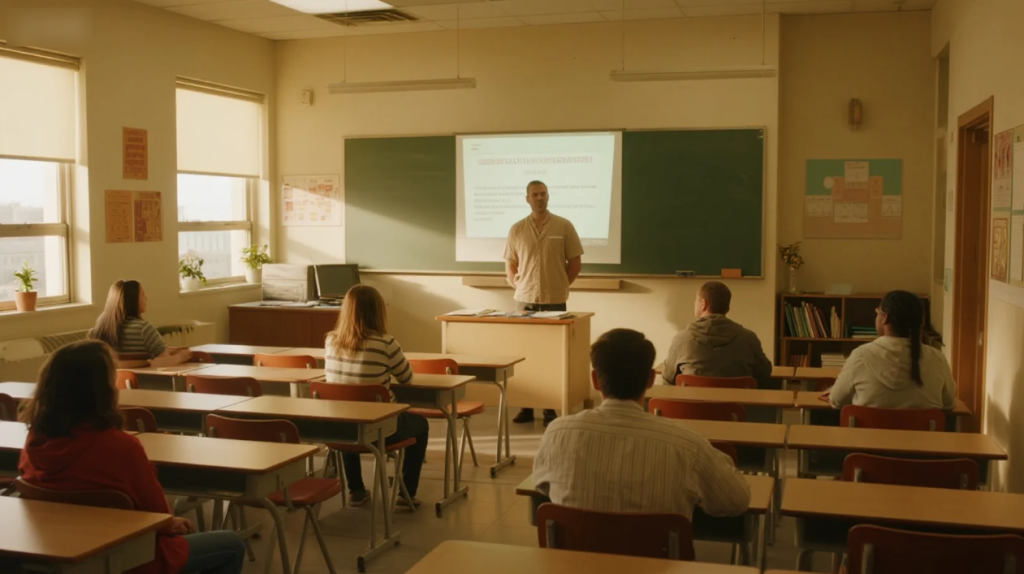Why Feng Shui Matters in the Classroom
A classroom is more than walls and desks—it’s a living space where energy flows. When students walk in, they can feel it instantly. Some rooms feel inspiring, others just feel off. That’s where classroom feng shui comes in.

Feng shui isn’t magic. It’s about aligning space with human behavior. When arranged with intention, a classroom can help students concentrate, behave better, and even feel more motivated to learn.
Common Energy Blockers in Classroom Layouts
Before making changes, it’s important to spot problems. Crowded furniture, sharp corners, and blocked entrances disrupt natural energy. Too many visual distractions on walls or cluttered teacher desks can also make the space feel chaotic.
A classroom feng shui assessment usually reveals these common culprits. Windows directly behind students can cause distraction. Desks facing a wall may lead to boredom or isolation. Fluorescent lighting might add fatigue. It’s not always obvious—but once you notice, it’s hard to ignore.
Ideal Desk Arrangement for Focus and Harmony
The way student desks are positioned shapes the energy in the room. In classroom feng shui, desks should ideally face the front without sharp angles. A U-shape, semicircle, or orderly rows with clear walkways allow energy to circulate evenly.
Avoid placing students with their backs to the door—this can create a sense of vulnerability. The teacher’s desk should face the door diagonally from a corner if possible, giving the teacher a “command position” without being directly in the path of energy.
Actually, one teacher tried this and said she felt more respected and alert. Small change, big impact.
Lighting, Color, and Natural Elements
Lighting is key. Natural light boosts mood and alertness, while harsh artificial light can make students sluggish. If windows are available, open them during class time. Add full-spectrum lamps where needed.
In terms of color, choose calming tones like soft blues or earthy greens. Bright red might energize but could also overstimulate. Plants are a great addition—they purify air and bring a sense of life.
A student once commented that after adding two small plants to the back of the classroom, “it felt more peaceful, like outside.”
Decluttering for Mental Clarity
Clutter blocks energy and drains attention. This applies to teacher desks, bookshelves, and wall space. A messy bulletin board can overwhelm rather than inspire.
Classroom feng shui encourages tidy zones for each purpose. For example, keep a clean homework station, a quiet reading area, and a visible but minimal display for student work.
Use closed storage boxes for supplies instead of open bins. Label everything clearly. These changes not only look better, but they also signal calm and order to young minds.
Addressing Specific Student Needs Through Layout
Sometimes, one layout doesn’t fit all. Feng shui also supports the idea of flexible spaces. For students who get anxious, place their desks near solid walls. For those who need stimulation, seating closer to the windows might help.
Consider using soft dividers or rugs to define zones—like group work corners, solo reading areas, or mindfulness spaces. These small tweaks can meet emotional and cognitive needs without overhauling the entire classroom.
Real Example: A School That Used Feng Shui
A middle school in Oregon adopted classroom feng shui in one pilot room. They reorganized seating to reduce back-facing door positions, added calming artwork, and removed 30% of the visual clutter.
Within two months, the teacher reported a drop in minor behavior issues and an increase in student engagement. Not every student noticed the change consciously, but many said the room “felt easier to think in.”
Overcoming Layout Challenges in Small Classrooms
Not every school has large, open classrooms. Many educators deal with tight spaces. Still, feng shui can help. Use vertical storage to free up floor space. Hang mirrors to open up closed areas.
Instead of moving walls, move intention. Even placing a calming image on a back wall can redirect energy. Make sure no student is trapped in a corner with no view of the board—this subtly affects their willingness to participate.
Classroom Feng Shui Tips for Teachers
Here are simple steps any teacher can take:
- Keep desks in aligned rows or U-shapes
- Face the teacher’s desk toward the door from a side angle
- Remove unnecessary objects from view
- Use soft lighting and add a small plant
- Display motivational quotes in clear, uncluttered spaces
These small efforts bring big returns in clarity and classroom harmony.
Final Thoughts: Intention Transforms Learning Spaces
Classroom feng shui isn’t about strict rules. It’s about designing a space that supports growth, calm, and community. When students feel safe and focused, learning happens more naturally.
If you’re an educator, try one change this week. Rearrange your desk. Clear one corner. Add one live plant. The room will feel different—and so will you.
